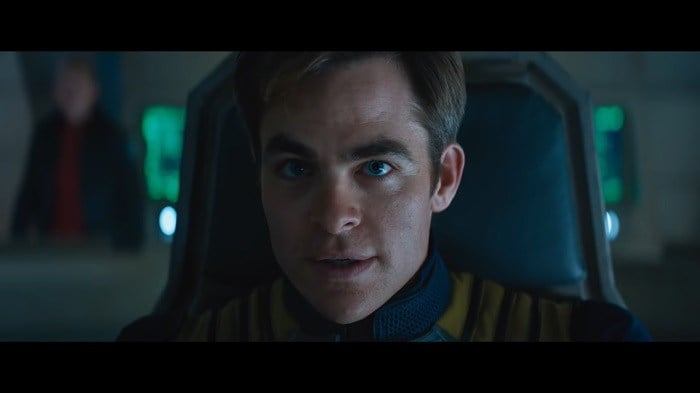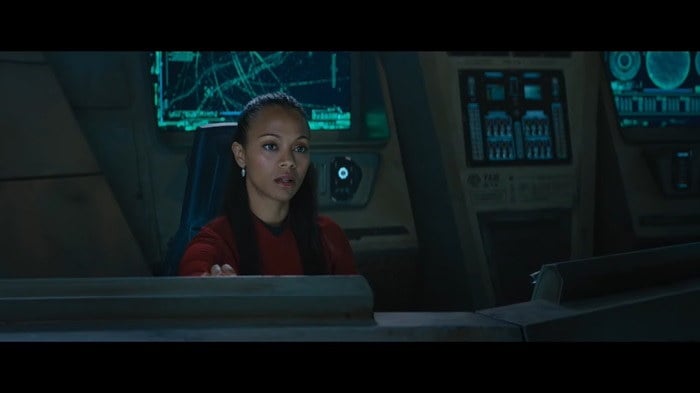Star Trek Beyond, directed by Justin Lin and released in 2016, is the third installment in the rebooted Star Trek film series. The movie follows the crew of the starship USS Enterprise as they face a formidable new enemy, Krall, who seeks to unleash a devastating bioweapon upon the Federation. The ending of "Star Trek Beyond" is a culmination of intense action sequences, character development, and themes of unity, friendship, and the resilience of the human spirit.
Plot Summary
Star Trek Beyond follows the USS Enterprise crew, led by Captain James T. Kirk, as they become stranded on a hostile alien planet. Facing a new adversary, Krall, and his deadly plans, the crew must unite and employ their ingenuity to survive. The film explores themes of teamwork, resilience, and the enduring spirit of exploration, blending intense action sequences with character development. As they overcome challenges, the crew rebuilds the iconic starship, USS Franklin, to continue their mission of boldly going where no one has gone before.
The Ending Explained

The film's climax unfolds on the alien planet Altamid, where Krall (played by Idris Elba) is preparing to unleash the bioweapon, which he believes will bring about the destruction of the United Federation of Planets. Captain James T. Kirk (played by Chris Pine) and his crew find themselves separated and facing various challenges as they attempt to stop Krall's plan.
One notable aspect of the ending is the destruction of the USS Enterprise. In a dramatic sequence, the starship is ambushed and overwhelmed by Krall's swarm of advanced attack ships. The iconic vessel, a symbol of exploration and unity, is torn apart in a visually stunning and emotionally resonant sequence. This turn of events serves as a major setback for the crew and raises the stakes for the remainder of the film.
The destruction of the Enterprise triggers a sense of vulnerability and loss among the crew, emphasizing their reliance on each other and their shared commitment to the ideals of the Federation. The subsequent scenes focus on the crew members regrouping and finding innovative ways to combat Krall and prevent the deployment of the bioweapon.
The film's ending pays homage to the original Star Trek series by featuring a sequence where the crew works together to construct a makeshift starship, the USS Franklin. This moment is not only a nod to the franchise's legacy but also a symbol of resilience and adaptability in the face of adversity. The resourcefulness of the crew showcases their ability to overcome challenges and highlights the theme of unity that runs throughout the film.
The character development in the ending is particularly notable. Captain Kirk, in particular, undergoes a significant arc as he grapples with doubts about his role and purpose. The destruction of the Enterprise prompts Kirk to question whether he is suited for the life of exploration and leadership. This internal struggle adds depth to the character and allows for a more nuanced exploration of his motivations and vulnerabilities.
Spock (played by Zachary Quinto) and Dr. Leonard "Bones" McCoy (played by Karl Urban) also share a significant moment of camaraderie and self-discovery. The two characters, who often engage in humorous banter, find themselves working together to survive on the hostile planet. This unexpected alliance highlights the strength of their friendship and mutual respect, showcasing the importance of teamwork in overcoming challenges.

Uhura (played by Zoe Saldana) and Sulu (played by John Cho) contribute to the resolution of the plot by infiltrating Krall's base and disabling the bioweapon. Their resourcefulness and determination underscore the significance of every crew member's contribution, reinforcing the film's message of unity and collaboration.
One of the key elements of the ending is the confrontation between Kirk and Krall. The film delves into Krall's backstory, revealing that he was once a Starfleet captain named Balthazar Edison who became disillusioned with the Federation's values and mission. The narrative explores themes of isolation, the cost of war, and the consequences of unchecked ambition.
The encounter between Kirk and Krall becomes a clash of ideologies. Kirk, representing the principles of unity, cooperation, and the pursuit of a better future, confronts Krall, who has become a symbol of bitterness and resentment. The resolution of this conflict serves as a commentary on the potential dangers of losing sight of the ideals that bind a diverse interstellar alliance.
The film's ending is not just about defeating a villain but also about understanding the motivations and grievances that led to the antagonist's descent into darkness. The resolution of Krall's character arc adds depth to the narrative, emphasizing that even those who appear as adversaries may have experienced hardships and challenges that shaped their perspectives.
As the climax reaches its peak, the crew successfully prevents the deployment of the bioweapon, thwarting Krall's destructive plans. The resolution of the conflict is both action-packed and emotionally resonant, with each crew member contributing to the victory in their own way. The film doesn't solely rely on spectacle; it emphasizes the personal growth and connections forged among the characters.
The ending also addresses the aftermath of the conflict, as the crew reflects on the losses and the challenges they faced. The film takes a moment to pay tribute to the late Leonard Nimoy, who portrayed Spock in the original Star Trek series and passed away in 2015. This homage adds a poignant touch to the conclusion, acknowledging the enduring legacy of Star Trek and the impact of its iconic characters.
The final scenes of "Star Trek Beyond" focus on the crew's commitment to continuing their mission of exploration. The film reinforces the idea that, despite the setbacks and hardships, the crew remains dedicated to the ideals of the Federation and the pursuit of knowledge. The construction of the USS Franklin, a symbol of resilience and ingenuity, becomes a vessel for new adventures and discoveries.
In a significant moment, Kirk receives a holographic message from Ambassador Spock, the older version of the character played by Leonard Nimoy. The message serves as a passing of the torch from the original series to the rebooted films. Spock's message emphasizes the importance of unity, friendship, and the enduring legacy of exploration that defines Star Trek.
The film's ending is not just a conclusion to a standalone story but also a celebration of the broader Star Trek mythology. It pays homage to the franchise's history while injecting new energy and perspectives into its narrative. The characters' commitment to exploration and discovery sets the stage for future adventures, leaving the door open for additional entries in the rebooted Star Trek film series.
The film's ending not only serves as a fitting resolution to its immediate plot but also as a nod to the enduring values that have made Star Trek a cultural phenomenon for decades.






